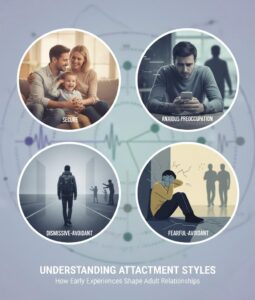Learning difficulties in primary school children can manifest in various forms, from struggles with reading and writing to challenges in understanding mathematical concepts. These difficulties, if not addressed, can significantly impact a child’s academic achievement and self-esteem. However, with early identification and appropriate intervention, children with learning difficulties can thrive academically and personally. This article outlines evidence-based strategies and approaches to support primary school children facing learning difficulties, drawing from scientific research and educational best practices.
Early Identification and Assessment
Early identification of learning difficulties is crucial. Research suggests that the sooner a learning difficulty is recognised, the more effective intervention strategies can be (Fletcher, J.M., Lyon, G.R., Fuchs, L.S., & Barnes, M.A., 2007, Learning Disabilities: From Identification to Intervention). Comprehensive assessments conducted by educational psychologists or special education professionals can diagnose learning difficulties, pinpointing specific areas where support is needed.
Individualised Education Programs (IEP)
Following assessment, an Individualised Education Program (IEP) can be developed for the child. This tailored plan outlines specific goals, interventions, and accommodations based on the child’s unique needs. IEPs are a collaborative effort involving teachers, parents, and sometimes the children themselves, ensuring that educational strategies are personalised and targeted (Mastropieri, M.A., & Scruggs, T.E., 2010, The Inclusive Classroom: Strategies for Effective Instruction).
Evidence-Based Instructional Strategies
Effective intervention relies on evidence-based instructional strategies. For reading difficulties, approaches such as phonics-based instruction have shown significant benefits. Systematic teaching of phonics helps children understand the relationship between letters and sounds, improving reading fluency and comprehension (National Reading Panel, 2000). For mathematical difficulties, explicit instruction in mathematical concepts and problem-solving strategies can enhance understanding and application of mathematical knowledge (Gersten, R., et al., 2009, Assisting Students Struggling with Mathematics: Response to Intervention (RtI) for Elementary and Middle Schools).
Multisensory Learning
Multisensory learning, which involves using multiple senses to explore and learn concepts, can be particularly beneficial for children with learning difficulties. This approach integrates visual, auditory, kinesthetic, and tactile elements into teaching, catering to diverse learning styles and enhancing memory and understanding (Farkas, G., 2003, Remedial and Special Education).
Technological Supports
Technology offers innovative solutions to support children with learning difficulties. Educational software and apps designed to enhance literacy and numeracy skills provide engaging and interactive learning experiences. Additionally, assistive technologies, such as text-to-speech and speech-to-text programs, can offer crucial support for children struggling with reading and writing (Edyburn, D.L., 2013, Journal of Special Education Technology).
Parental and Teacher Support
The role of parents and teachers in supporting children with learning difficulties cannot be overstated. A positive, encouraging home and school environment is essential. Regular communication between parents and teachers ensures coordinated efforts in supporting the child’s learning. Moreover, training for teachers in recognising and addressing learning difficulties is vital for creating an inclusive and supportive classroom setting (Spear-Swerling, L., 2016, The Reading Teacher).
Conclusion
Tackling learning difficulties in primary school requires a multifaceted approach, incorporating early identification, personalised education plans, evidence-based teaching strategies, multisensory learning, technological supports, and strong parental and teacher involvement. With these strategies in place, children with learning difficulties can overcome challenges and achieve their full academic potential.
References
- Fletcher, J.M., Lyon, G.R., Fuchs, L.S., & Barnes, M.A. (2007). Learning Disabilities: From Identification to Intervention.
- Mastropieri, M.A., & Scruggs, T.E. (2010). The Inclusive Classroom: Strategies for Effective Instruction.
- National Reading Panel. (2000). Teaching Children to Read: An Evidence-Based Assessment of the Scientific Research Literature on Reading and Its Implications for Reading Instruction.
- Gersten, R., et al. (2009). Assisting Students Struggling with Mathematics: Response to Intervention (RtI) for Elementary and Middle Schools.
- Farkas, G. (2003). Remedial and Special Education.
- Edyburn, D.L. (2013). Journal of Special Education Technology.
- Spear-Swerling, L. (2016). The Reading Teacher.
How to get in touch
If you or your patient/NDIS clients need immediate mental healthcare assistance, feel free to get in contact with us on 1800 NEAR ME – admin@therapynearme.com.au







